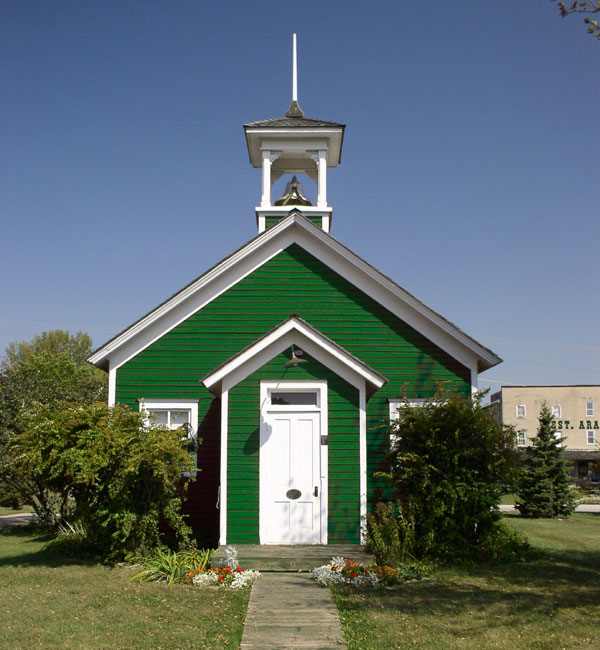The Little Green Schoolhouse
Energy-saving measures are a win-win for the environment and for superintendents’ budgets.
Jul 31, 202072.4K Shares1.9M Views
The sixth-graders in Marti Goldstone’s science class at Horace Mann Elementary are working on a project that could save their D.C. public school a lot of money. They are conducting an energy audit of their entire school. They calculate how much energy each classroom, gym, cafeteria, office, etc. uses, how much electricity each item in a room consumes, which appliances eat up too much electricity and what adjustments can be made to save energy.
“One thing the kids have honed in on,” Goldstone noticed, “is that little things use different amounts of energy.” A few of her sixth-graders discovered, for instance, that nearly identical electric pencil sharpeners in two different classrooms consumed different quantities of electricity. After measuring both, the kids found that one used 75 watts to sharpen a pencil, while the other took just 22.
Illustration by: Matt Mahurin
The science students are in their third week of working on the project. Goldstone says they’re enjoying it immensely. “Very often, when you’re asking students how to be greener, they automatically think of home,” she said. “It’s a little tougher when you ask, ‘What can you do for the environment when you’re at school?’”
That’s an important question because students in grades K-12 spend the better part of their days at school.
Goldstone is one of about 100 teachers nationwide who have teamed up with the conservation group the Alliance to Save Energy in an effort to make schools greener by identifying wasteful practices and adopting more energy-efficient measures to replace them. The group’s energy-audit exercise is part of its Green Schools program.
For public school teachers like Goldstone, the energy-audit lesson is a great opportunity for students to use math, science and social studies in pursuit of an important environmental goal. For superintendents of school districts, the project is worthwhile for another reason — it can save them money.
Many schools spend thousands of dollars a month on energy bills, said Emily Curley, who runs the Green Schools program at the Alliance to Save Energy. Even such simple no-cost acts as turning off classroom lights and computers and adjusting thermostat settings can save schools between 5 percent to 15 percent of their energy bills, she said. “That’s pretty significant, especially for public schools that might not have the upfront funding for big [green] renovations.”
Still, some public school districts have spent money to conform new construction, or retrofit existing buildings, to green standards. A few districts are required by law to make their campuses more energy efficient. Montgomery County in Maryland, for one, passed a measure requiring all its public schools achieve LEED (Leadership in Energy and Environmental Design) certification. LEED, which is administered by the U.S. Green Building Council, is the most widely used green-building rating system in the nation.
The Green Schools Initiative, a nonprofit organization based in Berkeley, Calif., calculates that that while the cost premium for green construction is around $3 a square foot, the return on the initial investment can be about $70 a square foot. For example, the upfront costs of building a highly durable wall could be offset exponentially by future savings on heating and air-conditioning bills.
Retrofitting existing buildings to confirm to green standards can more than pay for itself too. Deborah Moore, executive director of the Green Schools Initiative, estimates that the costs in terms of energy savings can be recouped between one to three years.
Montgomery County Public Schools in Rockville, Md., invests $500,000 a year in a green schools program, which yields annual energy savings of $5 million, according to Moore. The effort includes a green building program.
And Murrieta Valley Unified School District in Murrieta, Calif., saved $145,000 in energy costs over a span of nine months from energy-efficiency investments, according to the Green Schools Initiative.
While the environmental and economic benefits of greening schools are clear, it isn’t easy for public school districts to adopt such policies because they usually require increased funding up front. “School districts are perpetually strapped for money,” Moore said. “To come up with anything extra, they have to justify it to taxpayers who don’t want to pay anything extra.”
But Curley of the Alliance to Save Energy says that the payoff for public school districts from greening their campuses can be big. Because their school buildings tend to be older and less energy efficient, no-cost and low-cost steps to bring them up to greener standards can have an immediate effect, with big savings.
When it comes to green buildings, though, public schools don’t always have the money that some private schools do to achieve LEED certification. Yet, public school districts do have cheaper options for green building. They can simply adopt green standards of their own choosing, ignoring LEED rules altogether, or, they can meet LEED standards without going through the costly process of becoming certified.
Some public schools are going the extra green mile, outdoing even some state-of-the-art green private schools. Below are a few of the greenest public schools in the nation and a sampling of the factors that made them so. (You can find more of the greenest schools across the country by checking out National Geographic’s 2006 rankings.)
Desert Edge High School, Goodyear, Ariz.The school holds a LEED Silver certification thanks to such features as motion sensor lighting (which automatically turns on or off when people enter or leave a room), waterless urinals, low-flow toilets and a heat-reflecting roof that cuts air-conditioning costs. The LEED green-building requirements include using non-toxic paint and building materials low in toxins such as volatile organic compounds.
Michael E. Capuano Early Childhood Center, Somerville, Mass.The center, which has both a preschool and kindergarten, is powered by a combination of its own wind turbine and electricity bought from solar and wind sources. It serves nutritional food grown locally, some of which is cultivated by students in a community garden nearby. The school is also pesticide-free and uses natural cleaning products. To improve outdoor air quality, cars and buses follow a no-idling policy.
East Clayton Elementary School, Clayton, N.C.To save on energy costs, the school’s many windows take advantage of sunlight to light halls and classrooms. The school uses recycled denim to insulate its walls, another energy saver. It has a no-idling policy for buses to reduce pollution, and its cafeteria offers fresh, locally produced food. East Clayton also has an environmental curricula that includes garden programs and ecosystem projects at the nearby Clemmons Educational State Forest.
**Sonoji Sakai Intermediate School, Bainbridge Island, Wash. **Sonoji Sakai was built near a watershed and salmon stream, so its builders were careful not to disrupt the ecosystem. As part of its curriculum, fifth- and sixth-grade classes raise salmons and then release the fish into an on-campus stream. For the project, the students monitor the aquifer leading to the stream for pollutants. During the project, they learn about wetland ecosystems, life sciences and water preservation.
These and many other schools can be models for public school districts across the country to emulate — for environmental *and *economic reasons. Perhaps the most exciting aspect of these environmental efforts is the effect they’re having on students.
Meg Lusardi of the Massachusetts Dept. of Energy Resources runs the state’s green communities program and does a lot of work in the area of green schools. She says the excitement generated by the green projects is contagious in her state. “I think it’s part of the green wave,” Lisardi said. “The youth, especially, really take this stuff on, and then they carry it home with them. That’s why it’s so cool to do this at the school level.”

Paula M. Graham
Reviewer
Latest Articles
Popular Articles

